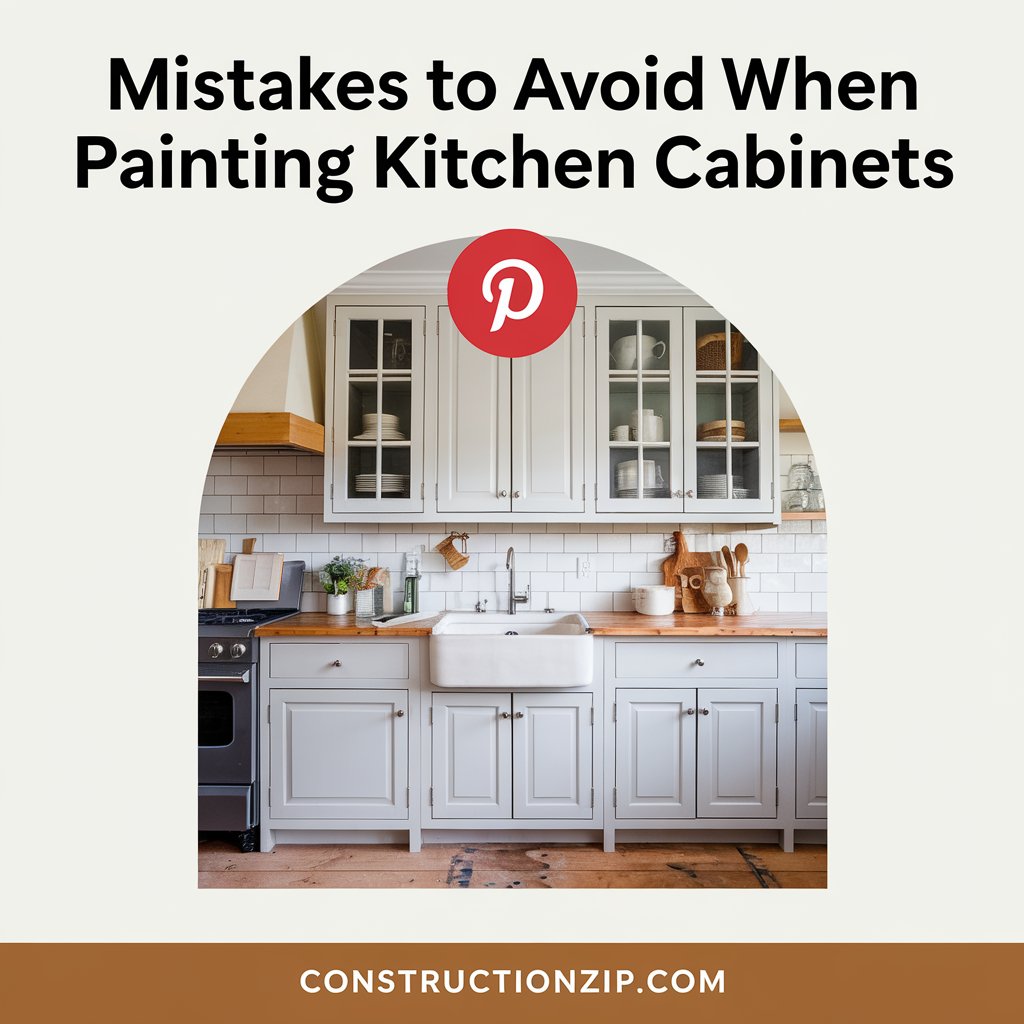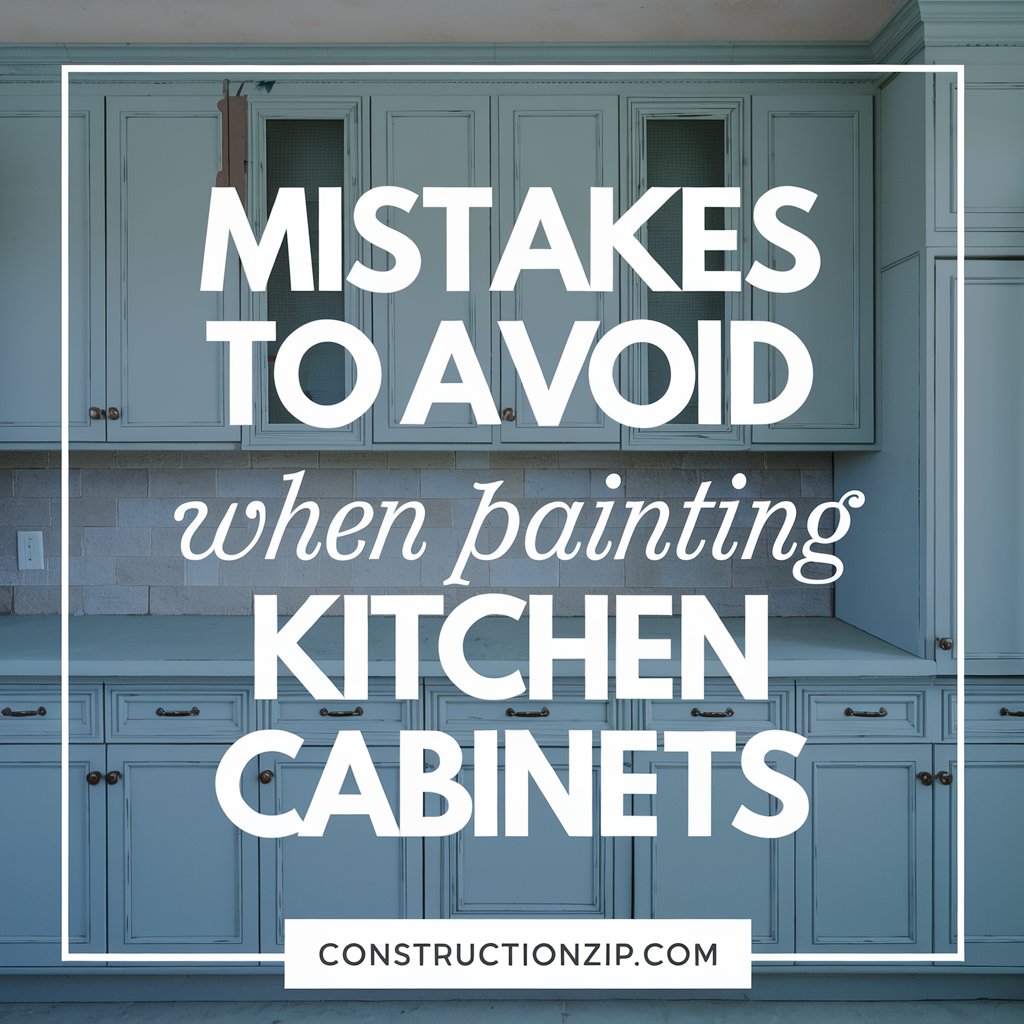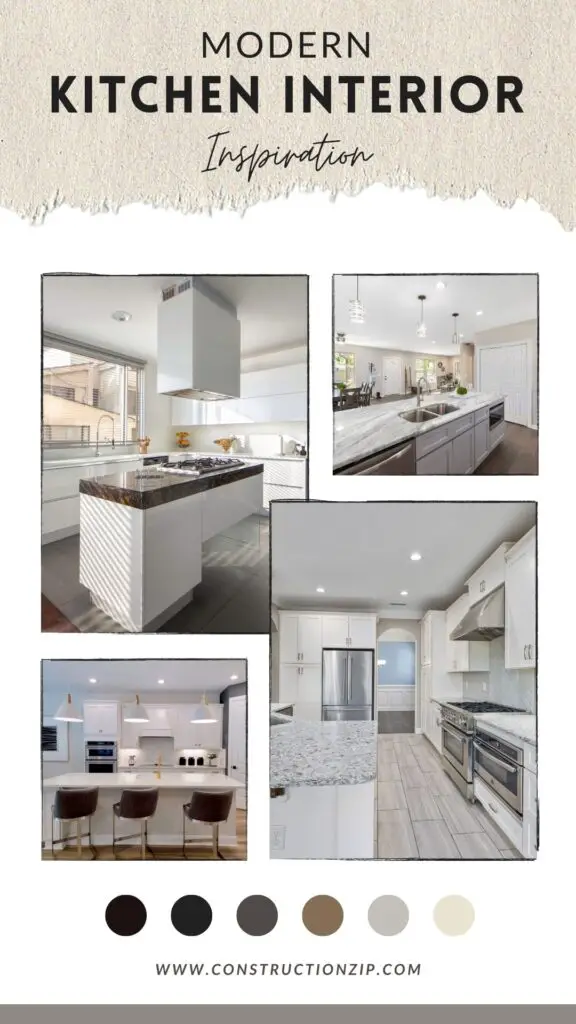Are you thinking about giving your kitchen a fresh new look by painting your cabinets? While painting cabinets is often a more affordable option than refacing or replacing them, it’s not without its challenges. If not done properly, this seemingly simple task can quickly turn into a costly mess that requires more time and money to fix. Painting kitchen cabinets might seem like a fun DIY project, but it requires precision, patience, and an understanding of the common pitfalls you need to avoid.
Even if you’re skilled at painting walls, cabinets are a different story. They come in a variety of materials and finishes, each requiring specific preparation and techniques for the paint to adhere properly. Without proper care, you could end up with unsightly brush marks, peeling paint, or even cabinets that look worse than before you started.

This article will guide you through the mistakes to avoid when painting kitchen cabinets, so you can save yourself the frustration of a failed project. With the right approach, you’ll not only save money but also achieve a professional look that will last for years. Keep reading to discover professional tips and avoid the most common errors that could derail your project.
Benefits of Painting Cabinets
Painting your kitchen cabinets is a fantastic way to refresh your kitchen’s appearance without the hefty price tag of a complete renovation. Below are several key advantages:
| Benefits of Painting Cabinets |
|---|
| Provides a new look at a fraction of the cost of replacing or refacing cabinets |
| Quality paint gives a durable, long-lasting finish |
| Easier to clean and maintain with fresh paint |
| Increases the value of your home |
| Can be completed in under a week |
Painting cabinets can truly transform the overall look of your kitchen or bathroom. Whether you opt for a bold color or stick with something neutral, the outcome can be stunning—if done correctly.
Cabinets Need Special Attention
When painting cabinets, there’s no room for shortcuts. Skipping critical steps or rushing through the process can lead to costly mistakes and disappointing results. Here’s a breakdown of the most common mistakes people make when painting their kitchen cabinets.

- Rushing the Process
Painting cabinets is not a weekend project. With proper preparation, painting, and drying times, it’s a task that can span several days. Skipping steps like surface prep or rushing the drying time can lead to peeling paint, uneven coverage, and other issues. If you don’t allow enough time for each step, the whole project could fail. - Not Removing Doors and Drawers
Leaving the doors and drawers attached to the cabinets can make it difficult to get a clean, even coat of paint. You’ll also want to remove all hardware—like handles, pulls, and hinges—to avoid awkward paint cut-ins around them. Skipping this step can lead to a sloppy finish and chipped paint in the future. - Forgetting to Label Everything
As you remove doors, drawers, and hardware, it’s easy to lose track of which piece goes where. Label each item as you go, using tape or writing directly on the piece to indicate its location. This simple step can save you a lot of time when it comes time to reassemble everything. - Not Cleaning the Surface Thoroughly
Even if your cabinets look clean, they’ve likely accumulated layers of grease and grime over the years. Failing to properly clean the surface will prevent the paint from adhering correctly. Use a degreaser to get rid of all the residue. A wet rag won’t cut it. - Skipping Repairs
If your cabinets have cracks, dents, or holes, you’ll need to fill them in before you paint. Use wood filler or caulk, and scrape off the excess for a smooth finish. This will help your cabinets look professionally done and ensure the paint goes on evenly. - Neglecting to Sand
Most cabinets have a glossy finish that needs to be sanded down to a matte surface for the paint to stick. Skipping this step means the paint won’t adhere properly, and your cabinets may start peeling in no time. - Ignoring Dust
Even a small amount of dust can ruin your paint job, making the surface appear grainy or uneven. Vacuum the room and wipe down the cabinets before you begin painting to ensure a clean surface. - Skipping the Primer
Primer is essential for a long-lasting paint job. Not only does it help the paint adhere better, but it also prevents stains from the original surface from bleeding through the new paint. Don’t skip this step if you want your cabinets to look their best. - Using Cheap Paint
It may be tempting to save money by buying cheaper paint, but this is not the time to skimp. High-quality paint will give you better coverage, last longer, and be more durable against everyday wear and tear. - Not Allowing the Paint to Cure
Once the paint is applied, it needs time to cure fully before you reattach doors and hardware. If you rush this step, you risk smudging or ruining the finish, which could require more sanding and repainting. - Choosing the Wrong Color
Don’t rush into picking a color. Cabinets take up a lot of visual space, and the wrong shade can overwhelm the room. Test your chosen color on a small section first to make sure it’s the right fit.

Choosing the Right Paint Color
When it comes to picking a paint color for your cabinets, it’s all about personal taste. But beyond the color, you’ll also want to choose a finish that works best for your needs. Since kitchen cabinets get a lot of use and are prone to getting dirty, selecting a paint finish that doesn’t show fingerprints and is easy to clean is essential.

A semi-gloss or satin finish is often the best choice for cabinets because it offers a slight sheen that is both attractive and practical. These finishes are easier to clean than matte paint, making them ideal for high-traffic areas like the kitchen. High-quality paints like those from Sherwin Williams will ensure your cabinets not only look great but also stand the test of time.
Steps for Repainting Kitchen Cabinets
Repainting kitchen cabinets is a detailed and time-consuming process, but following these steps can help ensure success:
| Steps for Repainting Cabinets |
|---|
| 1. Remove doors, drawers, and hardware |
| 2. Label all pieces for easy reassembly |
| 3. Clean all surfaces with a degreaser |
| 4. Fill in any cracks or dents |
| 5. Sand surfaces to remove glossy finish |
| 6. Wipe down surfaces to remove dust |
| 7. Apply a stain-blocking primer |
| 8. Paint with a high-quality paint |
| 9. Allow paint to fully cure before reattaching hardware |
Following these steps will help ensure that your paint job looks professional and lasts for years to come.
Tips When Hiring an Expert
While painting cabinets yourself can save money, it’s a labor-intensive job that requires time, skill, and patience. If you’re unsure whether you can handle the task, hiring a professional may be the best option. Here are some tips for finding the right contractor:
- Look for a company with experience in cabinet painting. Check online reviews and request before-and-after photos of past projects to ensure they know what they’re doing.
- Confirm the timeline. Even though a professional will complete the work faster than a DIY project, you’ll want to ensure their timeline works with your schedule.
- Ask whether they supply all the materials, including paint and equipment. A good contractor will bring everything needed, saving you the hassle of sourcing supplies.

Why Going Pro is a Better Choice
Painting cabinets requires more than just a brush and some paint. It involves meticulous preparation, the right tools, and precise techniques. A professional will have the expertise to get the job done efficiently and with flawless results. Plus, they’ll handle the clean-up, leaving your space spotless and ready to use.
Professionals also have access to high-quality paints and tools that aren’t always available to DIY-ers. This means your newly painted cabinets will look better and last longer than if you tried to tackle the project on your own.
In conclusion, while painting kitchen cabinets can save you money, it’s a time-consuming and delicate process that must be done correctly. By avoiding common mistakes and considering hiring a professional, you can ensure that your cabinets look beautiful and last for years to come.